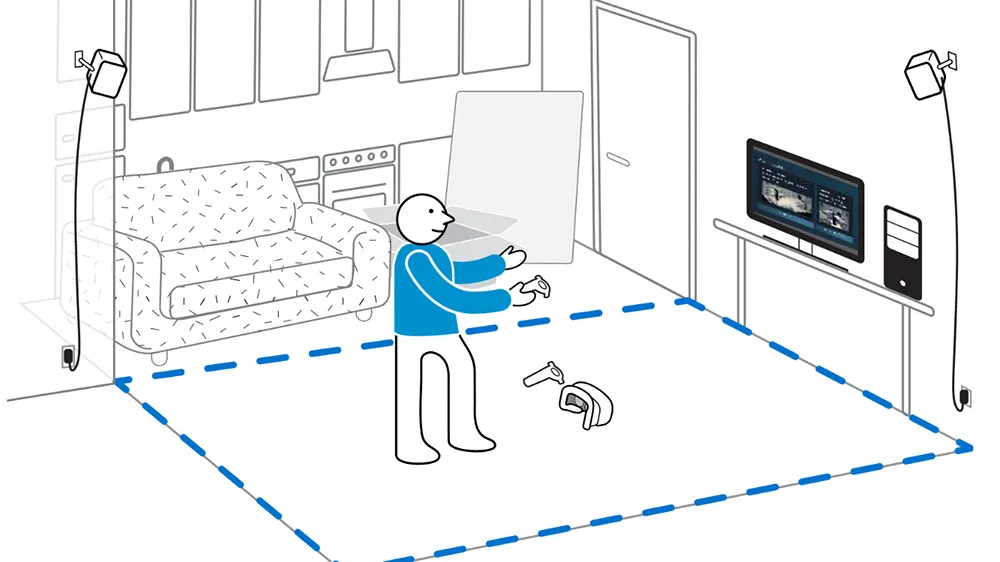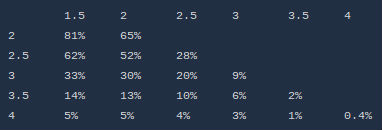New statistics released by Valve after two months of HTC Vive and Oculus Rift sales suggest developers need to seriously consider development of room-scale VR experiences.
Of the people who use SteamVR, which is software that can run VR scenes on either the Rift or Vive, 81.5 percent meet the minimum requirements for a room-scale set up. That means a strong majority of SteamVR users are using virtual reality in spaces with floors measuring at least 2 meters by 1.5 meters. In fact, a little more than half of SteamVR users have spaces at least 2 meters by 2.5 meters.
In case you are unfamiliar with how SteamVR defines your “Play Space”:
It’s a rectangular area that players keep clear from floor to ceiling and developers keep their required interactive objects within. Room-scale VR requires a minimum of 2 x 1.5 meters, but VR applications may specify a larger minimum required size. Some VR content is designed to scale based on the Play Area size, effectively giving the best experience to players with a large Play Area while still supporting a smaller minimum size. SteamVR also supports Standing-Only VR which is simply defined as a 1 meter diameter circle.
Of course, the largest single percentage is 18.5 percent who use VR in a standing only space. This is presumably the setting Rift owners who use SteamVR are going with (along with some Vive customers), since the Rift doesn’t come with hand controllers or a second camera to properly set up a larger space.
This would suggest that the remaining roughly 81 percent of users in the SteamVR data are Vive customers who are making room for VR in their homes and offices. Valve offered a chart to easily understand the usage breakdown, showing the percentage decreasing with support for larger and larger spaces. However, we still see at least 9 percent of users with spaces as large as 3 meters by 3 meters, as well as 6 percent who have been able to stretch out one side of a room to at least 3.5 meters.
The Oculus Rift is scheduled to get support for larger areas later this year with the release of Oculus Touch hand controllers as well as a second tracking camera. The data suggests that when the technology supports it, people will opt for spaces larger than the minimum. It would likely be in the best interests of developers to create experiences that work well with both large and small spaces alike. Also worth noting, it’s unclear what overall percentage of PC-based virtual reality usage the Vive represents right now, since an unknown number of Rift owners use Oculus software to run the VR experience rather than the Steam technology from Valve.
Potential buyers of the Rift and Vive should take this data into account too, since it means that if you can’t make some room, then you may miss out on some cool things developers target for larger spaces. A significant minority of buyers have larger rooms and now that developers know this for a fact, some might opt to focus on that niche as a way to differentiate their software or try something that can’t be done with smaller rooms.
I hope Valve releases updated numbers as more data flows in. My Vive room started off on the smaller side, for example, but over time I realized I wanted a larger space and rearranged my whole house to put me in the 1 percent to the far end of the above chart. I would not be surprised to find I’m not alone and that a number of VR early adopters find ways to make more room over time.
Update: Post updated with additional context, per the suggestion of a comment below.



























